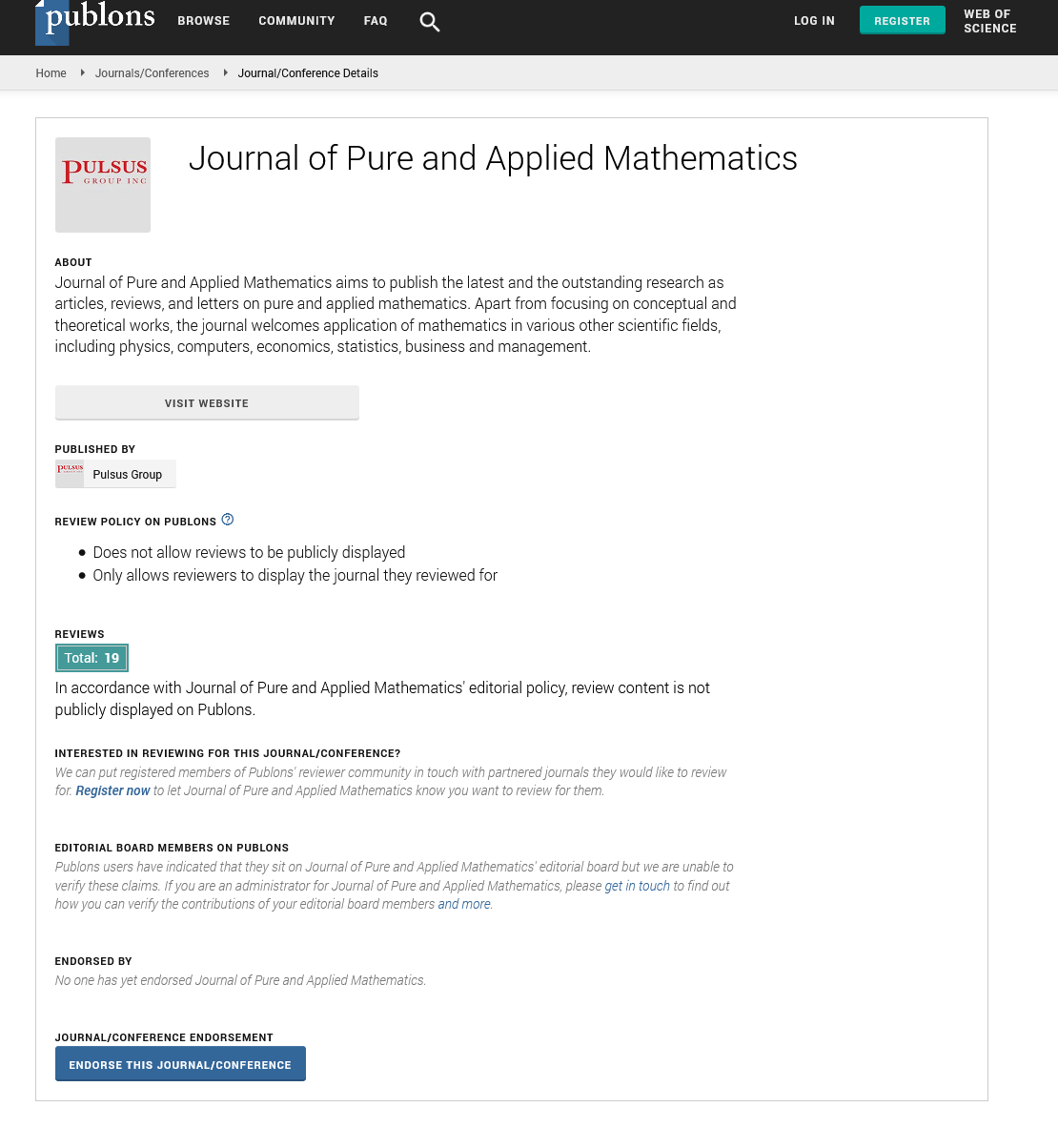Equivalence of information and immanence
Received: 27-Mar-2023, Manuscript No. puljpam-23-6303 ; Editor assigned: 28-Mar-2023, Pre QC No. puljpam-23-6303 (PQ); Accepted Date: Mar 30, 2023; Reviewed: 29-Mar-2023 QC No. puljpam-23-6303 (Q); Revised: 30-Mar-2023, Manuscript No. puljpam-23-6303 (R); Published: 31-Mar-2023, DOI: 10.37532/2752-8081.23.7(2).138
Citation: Jöge FM. Equivalence of information and immanence. J Pure Appl Math. 2023; 7(2):138
This open-access article is distributed under the terms of the Creative Commons Attribution Non-Commercial License (CC BY-NC) (http://creativecommons.org/licenses/by-nc/4.0/), which permits reuse, distribution and reproduction of the article, provided that the original work is properly cited and the reuse is restricted to noncommercial purposes. For commercial reuse, contact reprints@pulsus.com
Introduction
An equation to describe the equivalence of information and immanence is developed.
The article, Information & Effect describes the equivalence of Information and Effect: A = h • ln2 • H . It is based on De Broglie's formula A/h = S/k.
Transforming the formula Q=kT results in Qt = kTt →A =kI . Gives the equivalence of information and immanence:

This equation enables information from the universe to be calculated from the drop in the hyperbolic temperature curve. This describes an application of equation (1) and in addition to the principle of immanence development an meaningful application of the concept of immanence [1].
Meaning of the symbols used
A = Action (effect) Immanence
H = Shannon's information entropy
I = Immanence = T• t
Q = thermal energy
Qt= thermodynamic effect
S = thermodynamic entropy
t = time
h = Planck's constant
k = Boltzmann's constant
References
- Jöge FM. Information & Effect: An introduction to the concept of Immanence as a physical quantity. Sci GOD J. 2018:9(8); 598-613






